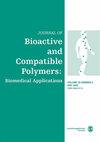Biocompatible sodium alginate–silk fibroin antibacterial microspheres from a microfluidic platform for infected wound repair
IF 2.1
4区 生物学
Q3 BIOTECHNOLOGY & APPLIED MICROBIOLOGY
引用次数: 0
Abstract
Micro/nano drug delivery systems can provide ideal controlled drug release. Microfluidic chip technology plays an important role in the preparation of microspheres. Sodium alginate (SA) has been used to prepare microspheres as drug carriers owing to its good biosafety and easy preparation. However, these microspheres lack antimicrobial activity and drug loading efficiency, which prevent their application for infected wound repair. Although silver nanoparticles (AgNPs) possess broad-spectrum antibiotic activity, liquid mixtures of AgNPs and SA are too unstable to fabricate drug-loaded microspheres using microfluidic chip technology. In this study, AgNPs were coated with silk fibroin (SF) and then dispersed in SA solution to fabricate antibacterial microspheres (denoted SA-SF-Ag) using microfluidic chip technology. SA-SF-Ag effectively inhibited the growth of microorganisms and gradually released AgNPs. Moreover, in vivo results showed that SA-SF-Ag promoted infected wound healing and angiogenesis by killing Pseudomonas aeruginosa on the surface of infected skin wounds of mouse models. This study offers a new method to integrate AgNPs into organic polymeric microspheres for the treatment of infected wounds.用于感染性伤口修复的微流体平台生物相容性海藻酸钠-蚕丝纤维素抗菌微球
微/纳米给药系统可提供理想的药物控释。微流控芯片技术在制备微球方面发挥着重要作用。海藻酸钠(SA)具有良好的生物安全性,且易于制备,因此一直被用来制备微球作为药物载体。然而,这些微球缺乏抗菌活性和载药效率,因此无法应用于感染伤口的修复。虽然银纳米粒子(AgNPs)具有广谱抗菌活性,但AgNPs和SA的液态混合物太不稳定,无法使用微流控芯片技术制备载药微球。本研究采用微流控芯片技术,将 AgNPs 包覆在蚕丝纤维素(SF)上,然后分散在 SA 溶液中,制成抗菌微球(SA-SF-Ag)。SA-SF-Ag能有效抑制微生物的生长,并逐渐释放出AgNPs。此外,体内实验结果表明,SA-SF-Ag 能杀死小鼠感染性皮肤伤口表面的铜绿假单胞菌,促进感染性伤口愈合和血管生成。这项研究为将 AgNPs 融入有机聚合物微球以治疗感染性伤口提供了一种新方法。
本文章由计算机程序翻译,如有差异,请以英文原文为准。
求助全文
约1分钟内获得全文
求助全文
来源期刊

Journal of Bioactive and Compatible Polymers
工程技术-材料科学:生物材料
CiteScore
3.50
自引率
0.00%
发文量
27
审稿时长
2 months
期刊介绍:
The use and importance of biomedical polymers, especially in pharmacology, is growing rapidly. The Journal of Bioactive and Compatible Polymers is a fully peer-reviewed scholarly journal that provides biomedical polymer scientists and researchers with new information on important advances in this field. Examples of specific areas of interest to the journal include: polymeric drugs and drug design; polymeric functionalization and structures related to biological activity or compatibility; natural polymer modification to achieve specific biological activity or compatibility; enzyme modelling by polymers; membranes for biological use; liposome stabilization and cell modeling. This journal is a member of the Committee on Publication Ethics (COPE).
文献相关原料
公司名称
产品信息
阿拉丁
LiBr
 求助内容:
求助内容: 应助结果提醒方式:
应助结果提醒方式:


